The Most Beautiful Mushrooms in The World!
Mushrooms are some of nature’s most magical and beautiful creations. These fungi can be just as attractive as any flower or plant because of their vivid colors and complex shapes. Whether you find them hidden deep in a forest or popping up in your yard, mushrooms offer a glimpse into that magical almost-never-seen world of nature.
There are about 14,000 types of mushrooms found in wet forest floors, rotting trees, and dung piles, so it’s not surprising that some of them look quite unusual. Not all of them have the usual toadstool shape. Some mushrooms have long, hair-like spikes, some are wide and shell-shaped, and others look like flowers with petals. Some mushrooms also have special patterns that look like a net.
Some mushrooms might look just normal, but they are very outstanding due to their bright and bold colors. They come in different colors like royal blue, deep indigo, and some even shine in the dark. These mushrooms are hard to find, which makes them some of the most mysterious and elusive fungi on Earth.
From the Bleeding Tooth mushroom to one that looks like it’s wearing a veil, here are the strangest, rarest and most beautiful mushrooms in the world.
Bleeding Tooth
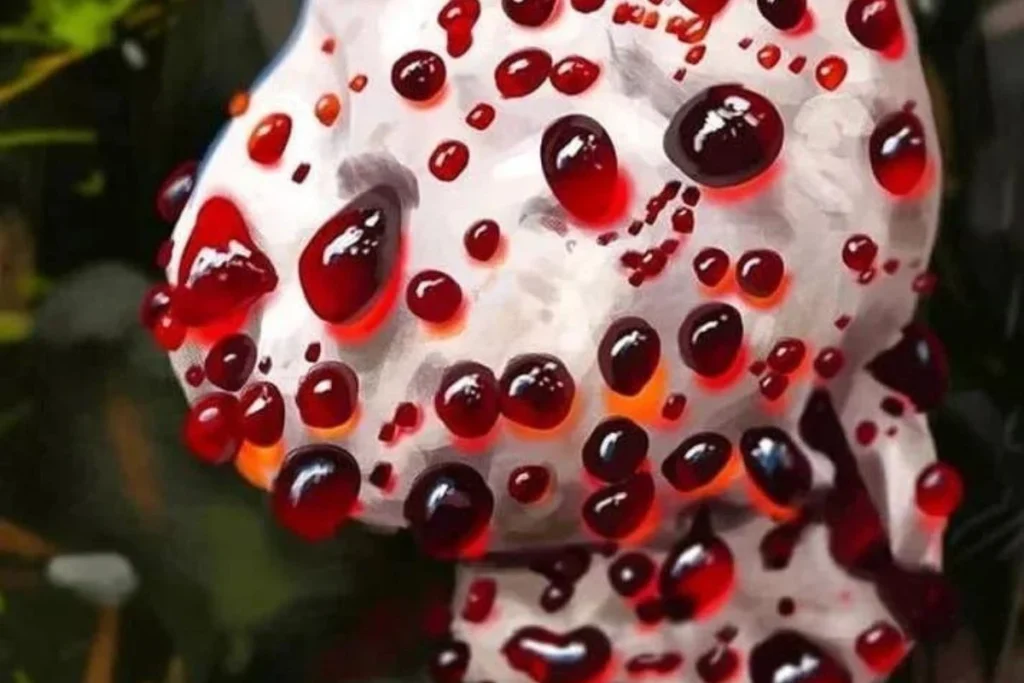
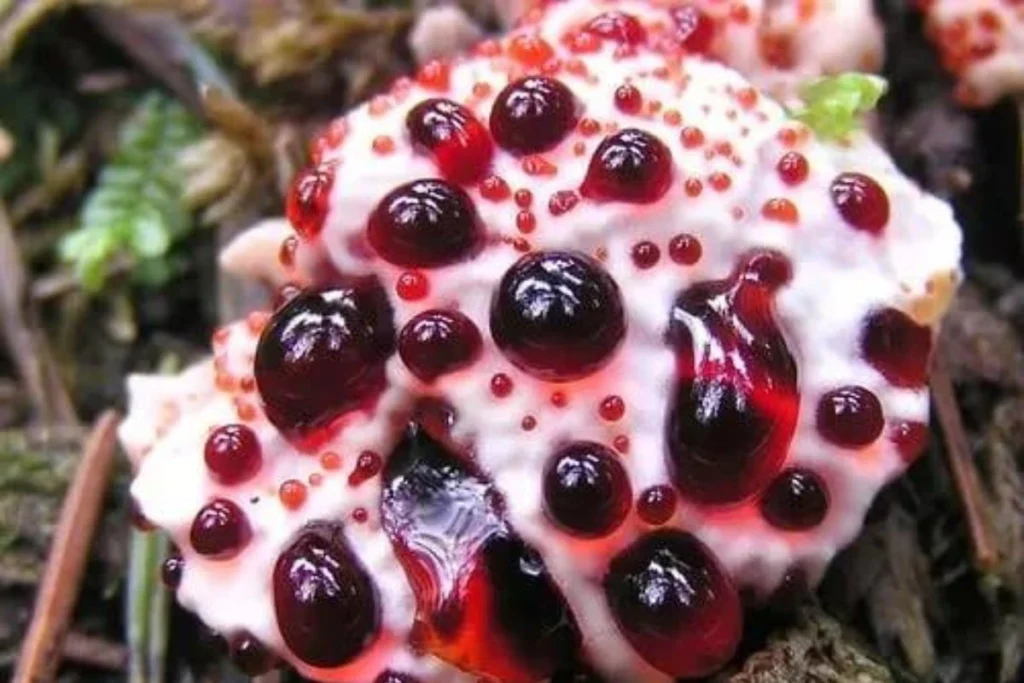
Bleeding Tooth is a striking mushroom, that looks like a red, blood-like liquid when it’s young. You can find it in coniferous forests. Bleeding Tooth is easily recognized because of its dramatic coloration and ecological role in the breakdown of organic matter although it is inedible because of its bitter and pungent taste.
Wrinkled Peach
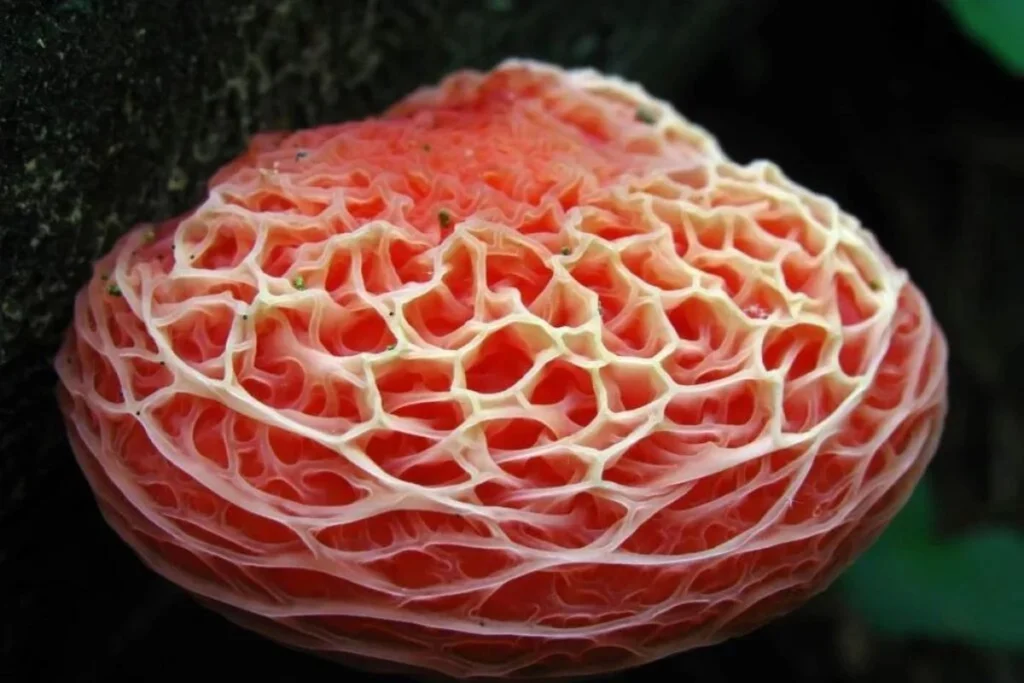
Rhodotus palmatus, also known as the Wrinkled Peach, is a unique fungus that recognized by its unique appearance. It has a cap with a textured surface that looks like ridges and valleys. The cap is usually pink or peach.
Rhodotus palmatus usually grows on decaying hardwoods in cool and shady places. It is easy to spot because of its spiky cap and bright color and can be found in different parts of Europe, North America, and Asia. This fungus is an exciting find for those who study mycology or simply enjoy nature’s more unusual creations.
Blood-Turned Mushroom
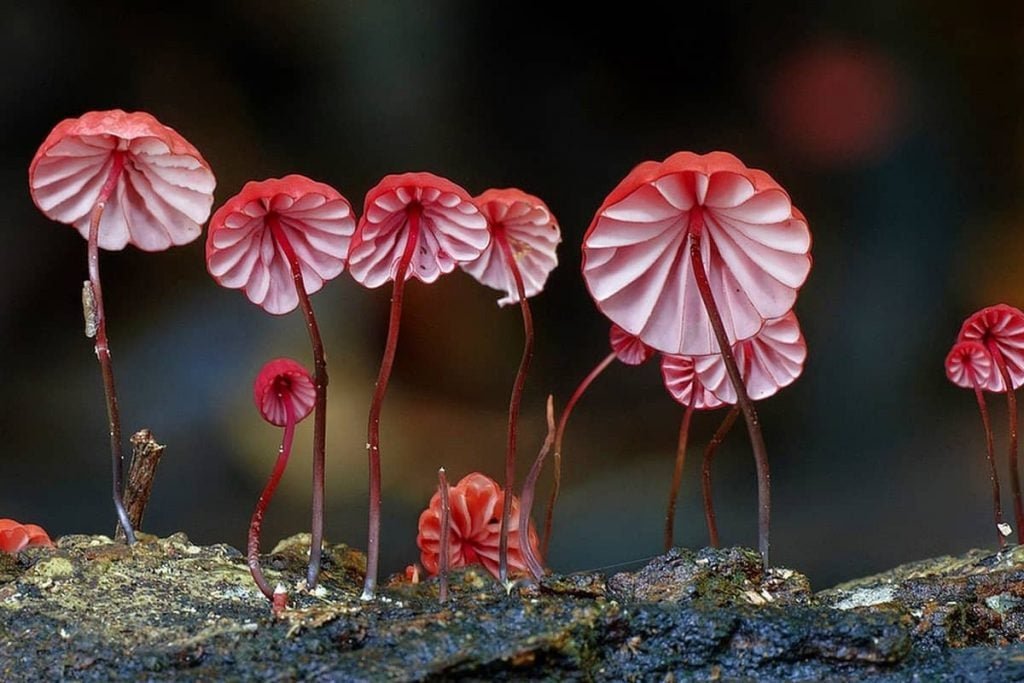
Marasmius haematocephalus, called the “Blood-Turned Mushroom,” is a pretty fungus with a bright red cap that looks like a drop of blood. It grows on old trees and fallen leaves in tropical forests and areas with rainy and sunny conditions
Even though it is tiny, it is important to the nature. This fungus breaks down dead plants, puts nutrients back into the soil, and supports a healthy forest ecosystem. Its eye-catching look and important role in nature make it an interesting topic for mushroom lovers.
Orange Pore
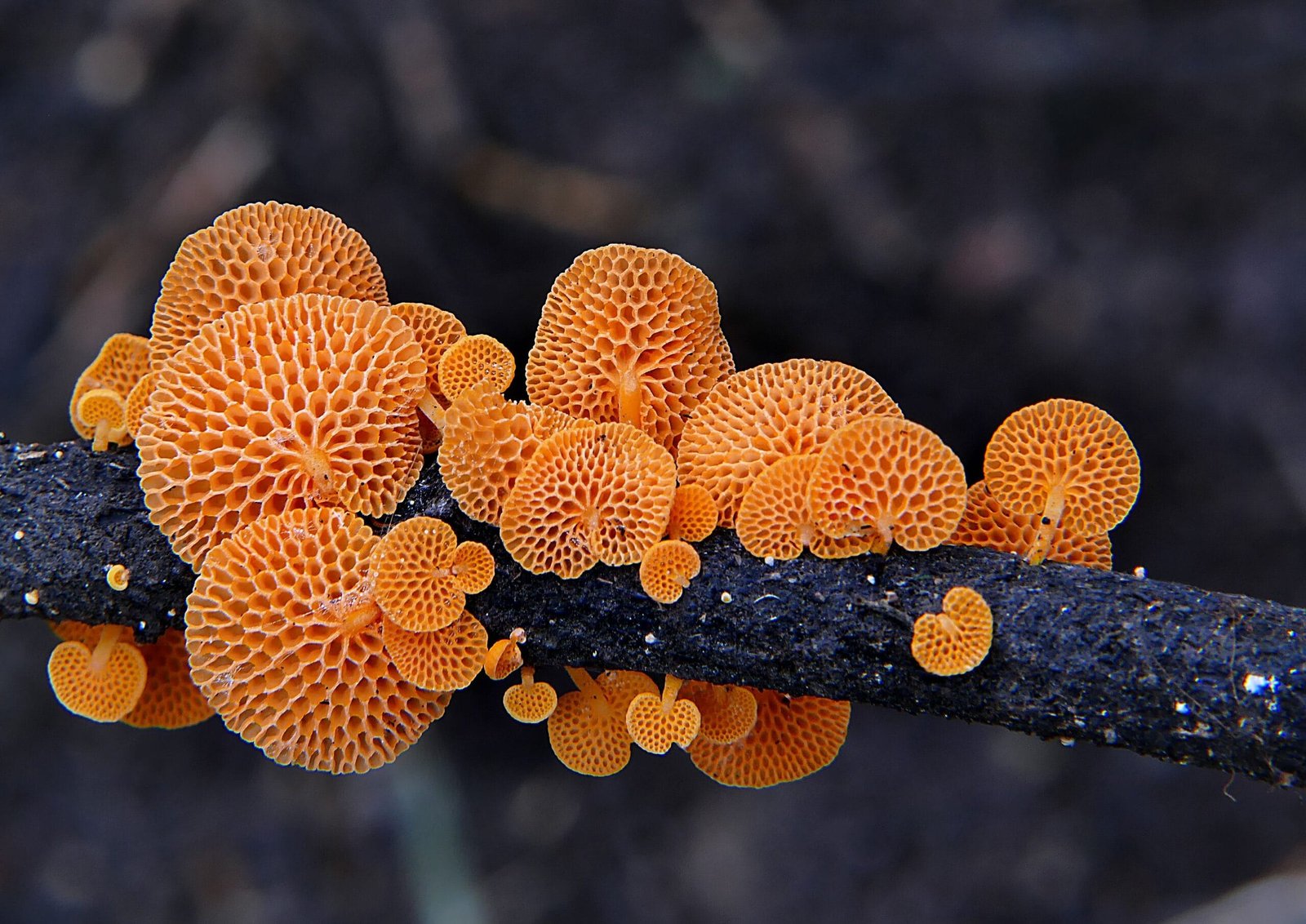
The Orange Pore, scientifically known as Porcina aurantiaca, is a vibrant orange mushroom found in warm, humid forests. It’s very easy to spot. Unlike many other mushrooms, this one doesn’t have gills under its cap. Instead, it has unique holes, which are one of the key things that help identify it.
This pretty mushroom usually grows on rotting wood or fallen leaves, helping to recycle nutrients in the forest. Porcina aurantiaca helps recycle nutrients by breaking down dead plants and animals, which keeps the soil healthy and supports the ecosystem.
Amethyst Deceiver

The Amethyst Deceiver, or Laccaria amethystina, is a mushroom with a bright purple top that stands out. Its bright color might change to a lighter purple as it gets older. This mushroom usually grows on the ground in the woods, often among fallen leaves and plants. The fungus is known for its special colors and for helping break down fallen leaves, which makes the soil healthier.
Bitter Oyster
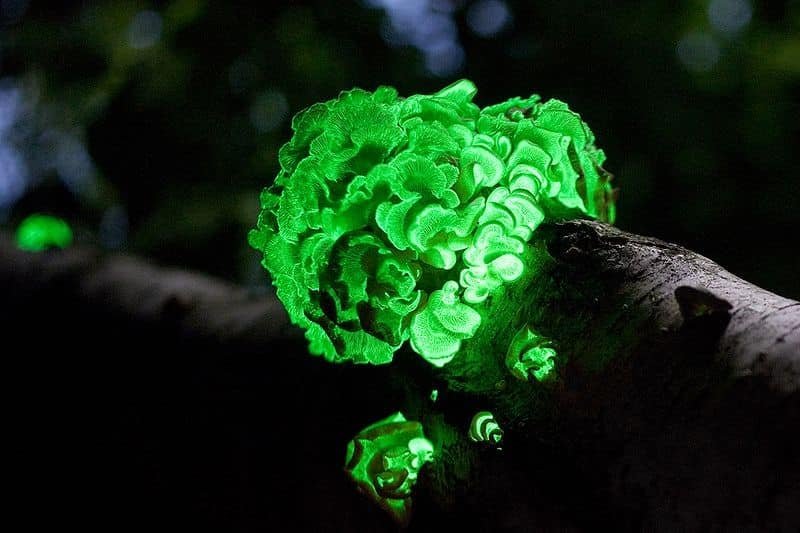
Panelus Stypticus, often called the “Bitter Oyster,” is a type of bioluminescent fungus with a translucent cap that can change color from yellowish to brown. It mostly grows in decaying woods in the forest. Bitter Oyster has the unique properties of luminescence in the dark, emitting green light. The fungus is Inedible because of its bitter taste and smelly texture but of interest to researchers studying fungal bioluminescence.
Turkey Tail Mushroom
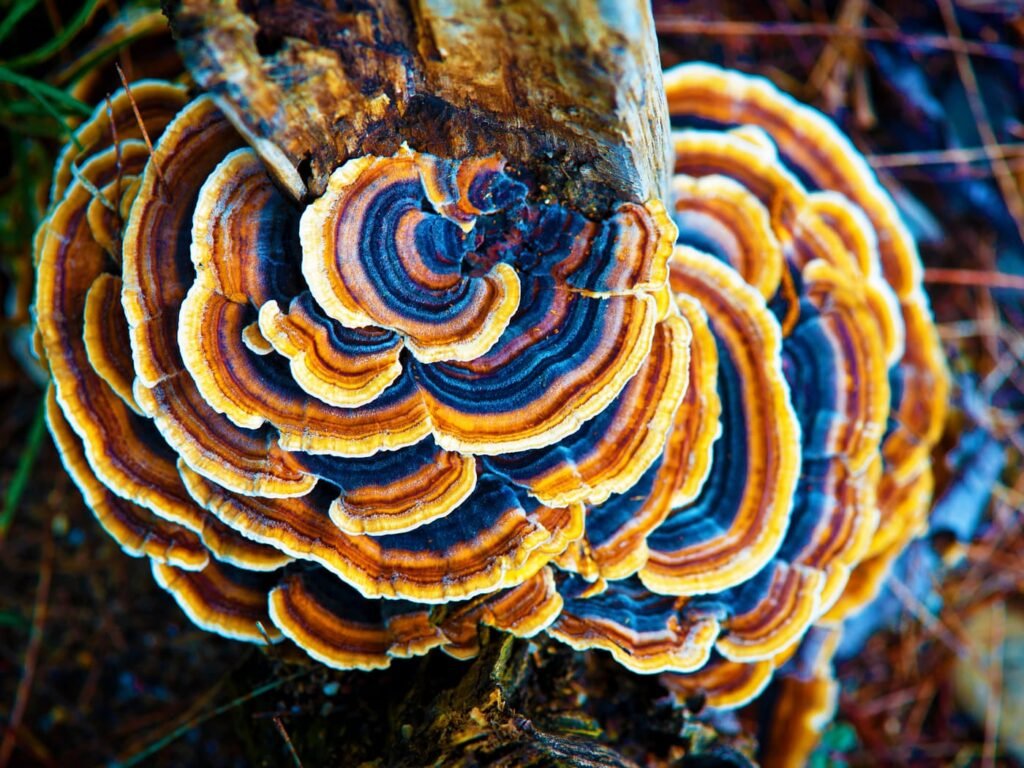
This mushroom is known for its beautiful color patterns that looks like a turkey’s tail feathers. It grows on decaying wood in forests all over the world. It helps break down old plant material and recycle nutrients. Researchers often study Turkey Tail because of its potential health benefits, particularly its immunomodulatory properties and healing qualities
Parrot Toadstool
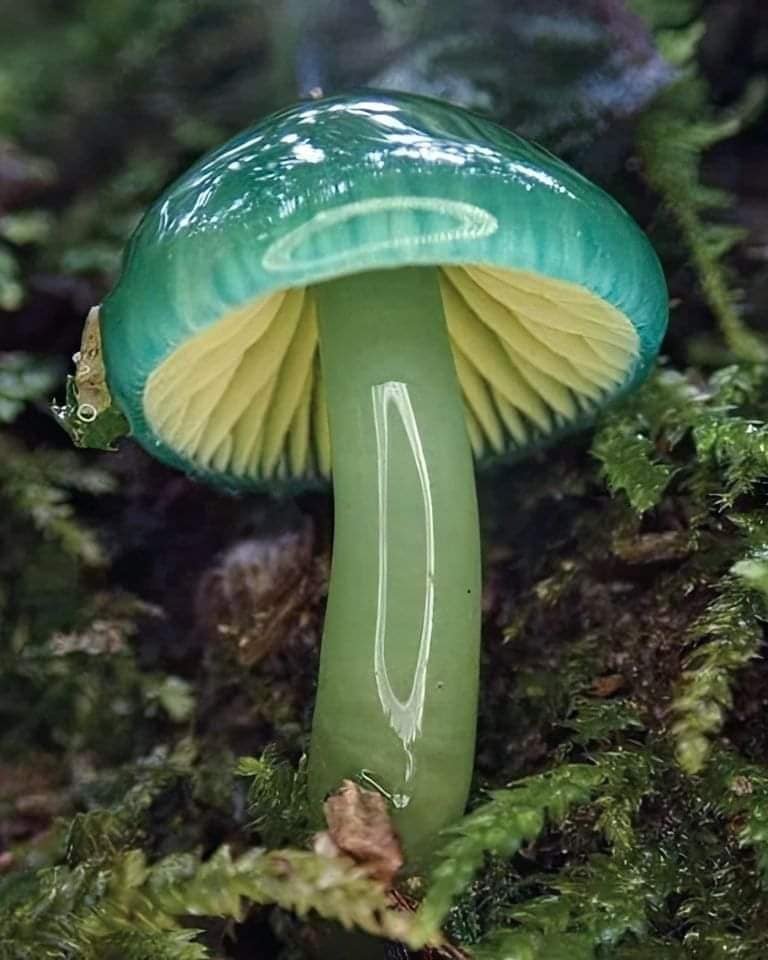
The Parrot Toadstool, or Parrot Waxcap, is a bright and very colorful mushroom when it is young. When they are young, bright green and yellow colors are common, but as they get older, they slowly turn to just yellow. This mushroom is found often in some areas of the UK but hard to find in most of Europe. The Parrot Waxcap is extremely slimy, which makes it easier to grab when it’s dry because the slipperiness goes away.
Lion’s Mane
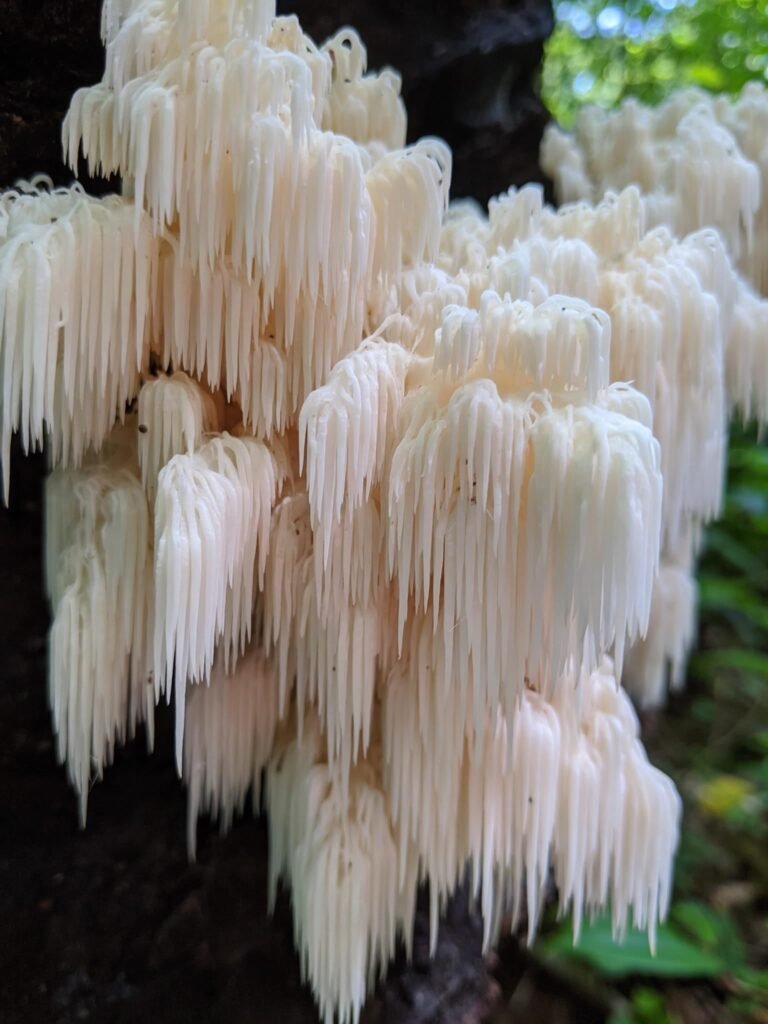
Lion’s Mane is a fascinating mushroom that gets its name from its white, spiky shape, which resembles a lion’s mane. These beautiful mushrooms grow on rotting hardwood trees in warm forests and can help with mental health and muscle recovery. They hold high value in both food and medicine.
Mycena Interrupta
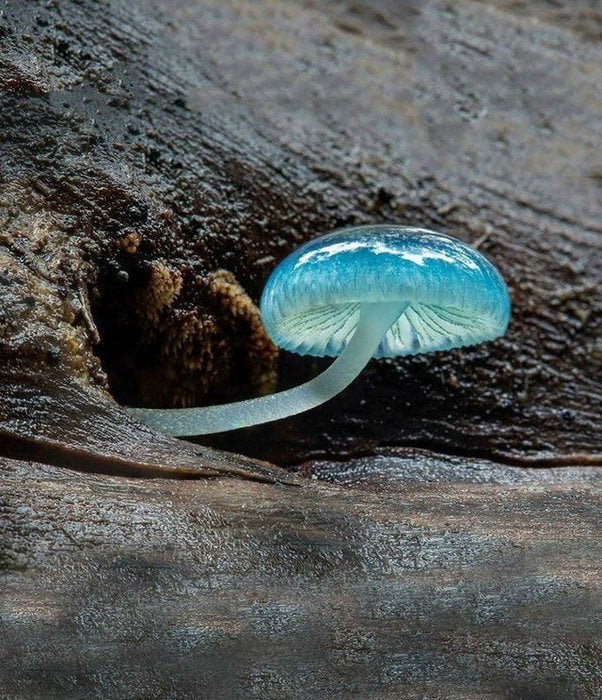
This is a tiny, fragile mushroom that is easy to spot because of its beautiful transparent cap. Usually grows on rotting wood or leaves in forests. It has a thin stem and a cap with slightly wavy edges that looks very pretty.
Fly Agaric

Fly Agaric is a beautiful mushroom that is easy to identify by its attractive red cap with white spots. This mushroom mostly grows in tropical boreal forests and is often showing up in stories and popular culture. Even though it has a bright color, Fly Agaric is extremely poisonous due to containing psychoactive chemicals. This makes it a fascinating but cautious specimen in the mushroom world.
Orange Peel Mushroom

Aleuria aurantia is a pretty type of fungus called the orange peel fungus or the orange cup fungus. This fungus belongs to the Pyronemataceae family. It has a bright orange or reddish-orange cup shaped fruiting body that looks like a small orange peel or something like a shallow bowl. This fungus is very common in Ireland, but it has also been found in many other places around the world, especially in North America and Europe.
Often found in coniferous and deciduous forests, as well as in grassy areas. It generally grows on the ground, mostly in fallen leaves or rotten wood. Orange peel fungi help break down dead plants, returning nutrients to the soil and recycling them in the environment.
Veiled Lady
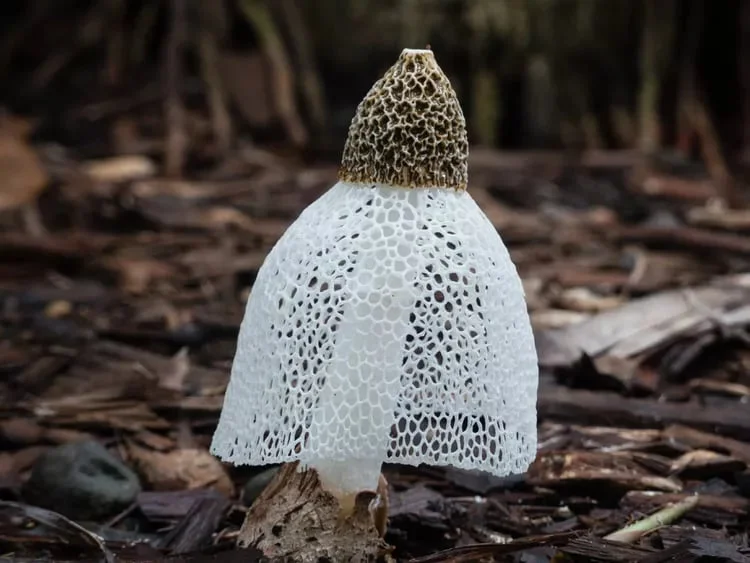
The Veiled Lady Mushroom, also known as Phallus indusiatus, is a unique and eye-catching fungus. This mushroom has a very uniquestructure, a tall, bell shaped cap with a lacey net that hangs down like a beautiful skirt. This veil, can vary in length and often touches the ground, making the mushroom look elegant and almost magical.
Veiled Lady mushrooms grow in tropical and subtropical forests in Asia, Africa, and the Americas, mostly on decaying plants. They often emerge after rainfalls. In addition to their beauty, these mushrooms emit a strong, unpleasant smell similar to rotting meat, attracting insects, especially flies. The insects help spread the mushroom’s spores as they move from one mushroom to another.



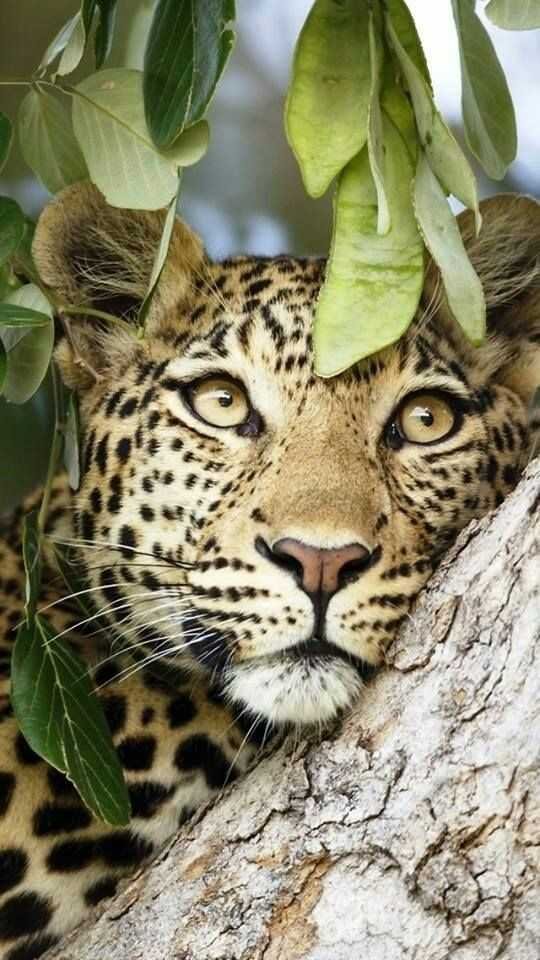
Fascinating exploration of another fo nature’s genius in disposing of fallen trees, etc.
Fascinating exploration of another of nature’s genius in disposing of fallen trees, etc.
I know nothing about mushrooms, but they interest me and they look to be very beautiful
Thank you extremely interesting and informative really enjoyed.
I love this. I’ve been studying mushroom types and benefits for about 2 years now. This is very interesting for me
Are they not Beautiful? I love mushrooms, and enjoy them in food when they are available. Not to mention the health benefits.
What a wonderful God to give us such beautiful treats.
Loved to see the variety of mushrooms. Also, I love to draw them.